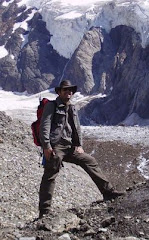In the 18th and 19th century the bones were mostly attributed to belong to victims of the biblical flood – this idea also should explained the transport and the deposition in caves of the remains.
Until 1970 bone accumulations – recognised as fossils – were mostly attributed to human activity, even if earlier observations showed how carnivores can gather and process bones in similar way as expected for human behaviour.
I have had an opportunity of seeing a Cape hyaena at Oxford...I was enabled also to observe the animal´s mode of proceeding in the destruction of bones: the shin bone of an ox being presented to this hyaena, he began to bite off with his molar teeth large fragments from its upper extremity, and swallowed them whole as fast as they were broken off. On his reaching the medullary cavity, the bone split into angular fragments...he went on cracking it till he had extracted all the marrow... this done, he left untouched the lower condyle, which contains no marrow, and is very hard. The state and form of this residuary fragment are precisely like those of similar bones at Kirkdale; the marks of teeth on it are very few...these few, however, entirely resemble the impressions we find on the bones of Kirkdale; the small splinters also in form and size, and manner of fracture, are not distinguishable from the fossil ones...there is absolutely no difference between them, except in point of age.
BUCKLAND 1823 Reliquiae Diluvianae, or, Observations on the Organic Remains attesting the Action of a Universal Deluge
The modern (re)interpretation of fossil bearing sites let conclude that the interaction between prehistoric humans and animals is complex and an ever-changing one. In the locality of Zhoukoudian (China) 42 hominid skeletal elements were found, 28 of them showing hyenid tooth marks – gnawing, biting, chewing, punctures, even regurgitation. On the other side, rhinoceros bones at the same locality show no activity by predators, but display cut marks – implying that early paleolithic humans are both predator/scavengers and preys. Nevertheless it is assumed that during later time periods humans become active and successful hunters, and lesser prey.
Fissures that act as sediment and also bone accumulation traps can develop not only in carbonates, but also in evaporitic sediments. Near the small village of Westeregeln (Thuringia, Germany) past quarrying activity for clay has exposed underlying Mesozoic gypsum and limestone formations, which in the upper part show an intensive “karst” network, refilled with Pleistocene sediments and fossils.

The uppermost part of the stratigraphic column of the infilling sediments is represented by a postglacial soil, developed on Loess – aeolian sediment deposited during the last great glacial period. These sediments cover ancient matrix supported breccias, presumably generated by partial collapse of former caves or fissures. Between these breccias, mostly on the top of the deposits, lithic artefacts, bones of ice age mammals and hyena coprolites are found exclusively in pebbly horizons.


Remarkable is - by a preliminary result - a human rib enclosed, how it seems, in a hyena coprolite. From the hyena were also discovered at least ten skulls, attributed to the ice age hyena Pachycrocuta brevirostris.
The site is still under examinations, so it is not clear if the apparent simultaneous presence in one layer of lithic artefacts/ humans bones and hyena bones mean also coexistence during the same time of this two species. Also the possible engulfed human bone can be explained by hyenas actively hunting humans, scavenging human remains, or simply -as artefact of the disturbed startigraphy and subsequent diagenesis.
The site of Westeregeln is interesting also for another “kind of fissures”. In red clays, colluvial material derived from the weathering of underlying sandstones, during the last glacial maximum an extensive ice wedge net developed. After the ice that created this wedges melted, the remaining fissure was filled by Loess. Today these ice wedges casts are easily eroding, and reveal not only loam and sand, but also lithic artefacts, that thousand of years ago felt into the open cracks and were “accumulated” and preserved trough time.


References:
BOYLE (2007): Vertebrate studies: Interactions with Hominids. In: (ed.) ELIAS: Encyclopaedia of Quaternary Science. Elsevier





Keine Kommentare:
Kommentar veröffentlichen